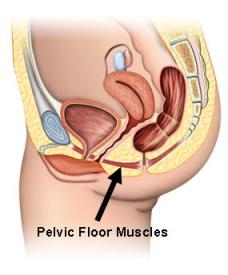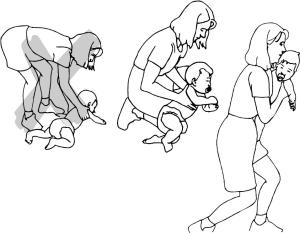 By Marianne Ryan PT, OCS
By Marianne Ryan PT, OCS
Clinical Director MRPT Physical Therapy
Did you know that “a common surgery often performed to repair damage caused by childbirth fails one-third of patients within seven years, a new study shows”?
Yup, it is the surgery women have done to cure incontinence and other problems caused by pelvic organ prolapse (POP), which often occurs as a result of childbirth.
An article written by Liz Szabo, for USA Today, goes on to explain:
1. “In nearly one-third of cases, surgical repair failed or women saw symptoms return”
2. “About 225,000 women undergo some kind of pelvic organ prolapse surgery each year”
3. “Some surgeries can be prevented; pelvic physical therapy can cure many milder cases”
Szabo also mentioned “about one in four women suffer either prolapse or incontinence at some point, and studies show that 11% to 19% of women undergo surgery for it.”
Let me repeat: 25% of all women develop incontinence or pelvic organ prolapse. That is one out of four of your female friends!
Cheryl Iglesia of the Georgetown University School of Medicine was quoted in Szabo’s article as saying, vaginal deliveries increase the risk of developing pelvic organ prolapse (POP), and in the future doctors will need to perform C-sections rather then vaginal deliveries for women at high risk for prolapse.
Yikes! Iglesia’s answer to the problem is more surgery and more C-sections?
What about more physical therapy?
The article does mention that studies show that “pelvic physical therapy, which includes Kegel exercises that strengthen pelvic floor muscles, can reverse many mild cases of prolapse”, but there is no mention on how pelvic physical therapy can prevent POP. There are also studies that show pelvic physical therapy can reduce the level of prolapse, for example reduce a grade 3 to a grade 2, etc.
If pelvic physical therapy can reverse pelvic organ prolapse, why aren’t women knocking down my door to get physical therapy treatment?
Why? Because I don’t think we take postpartum recovery seriously in our country. Women traditionally receive excellent prenatal and obstetric care during delivery, but postpartum care is lacking. 6 Weeks after delivery, women are usually given a pat on the back and told “good job done” and that they can resume sexual activity. What about postpartum rehabilitation? In our country women are left to fend on their own after delivery.
In other countries, such as France, they take postnatal care seriously. Did you know all French women receive free physical therapy after they give birth. I have been told by some of my patients that postpartum physical therapy is “mandatory” in France and they go for about 20 visits focusing on rehabilitating the pelvic floor and abdominal muscles after every baby they deliver.
In a light hearted article written by Claire Lundberg, “The French Government Wants to Tone My Vagina”, for Slate Magazine, Lundberg discusses the positive experience she had with the French postpartum rehabilitation program called la rééducation périnéale and how she was glad “a medical professional was paying attention to what happened down there.”
What about more physical therapy after one of these surgeries?
Did you know that after having surgery for pelvic organ prolapse most women do not receive pelvic physical therapy?
I recently asked a urogynocologist, who refers patients to my practice, why she did not refer her patients to physical therapy after preforming these types of surgeries. The answer was that she did not think it was necessary, and was not convinced that physical therapy would help the patient recover.
It is common practice to go for physical therapy treatment after surgery on other body parts, like the shoulder or knee; why isn’t is considered part of the rehabilitation process with pelvic surgeries?
If surgeons started sending their patients for physical therapy treatment after prolapse surgery; doesn’t it follow logic that it would help them reach better outcomes? Maybe physical therapy treatment could prevent surgical failures?
(Just in case you didn’t know, you can go directly to a physical therapist without a doctor’s referral in most states.)
More surgery is not the answer. More physical therapy is the key to solving pelvic organ prolapse.
References:
http://www.usatoday.com/story/news/nation/2013/05/22/common-pelvic-surgery/2325055/
http://www.slate.com/articles/life/family/2012/02/postnatal_care_in_france_vagina_exercises_and_video_games.html










